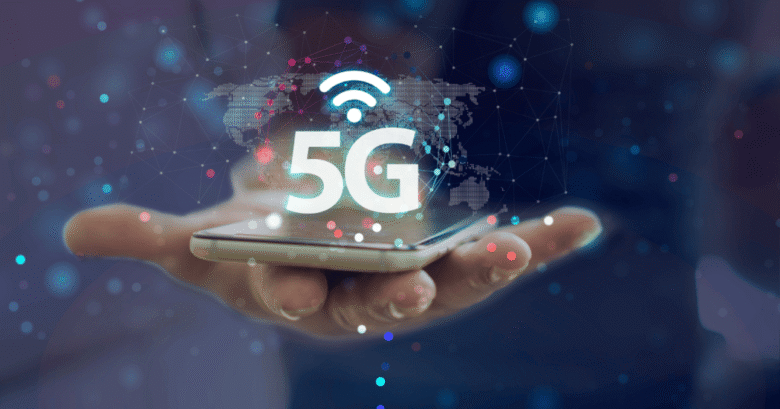5G marks a paradigm shift in how we connect with the world and is more than just a breakthrough in mobile technology. 5G promises to become the central nervous system of a new era of digital innovation, revolutionizing industries, cities, and daily life. Our next-generation network delivers incredible speeds, ultra-low latency, and robust device connectivity, enabling possibilities previously thought impossible. This article explores how 5G connectivity will transform everything from telemedicine and industrial automation to urban infrastructure, creating a smarter, more responsive world.
Mobile Broadband and the User Experience Revolution:
The first thing the average user will notice is a dramatic improvement in their mobile broadband experience. Under optimal conditions, 5G networks can reach peak data rates of 10 Gbps. This allows you to download a high-definition movie in seconds, compared to minutes on 4G. The real revolution is in capacity, not speed. In packed stadiums, concerts, and metropolitan centers, 5G can handle exponentially increased data traffic. Even with thousands of people using their devices simultaneously, high-quality video streaming, buffer-free video conferencing, and immersive gaming experiences are available anytime, anywhere. This enhanced mobile broadband (eMBB) supports data-intensive applications such as AR shopping and real-time 4K video sharing.
Ultra-Reliable Low Latency Communication for Mission-Critical Applications:
Perhaps the most innovative feature of 5G is its ultra-reliable, low-latency transmission. 5G reduces latency—the time between a command and data transmission—to 1 millisecond. This is a fraction of 20–30 milliseconds on 4G networks. Near-instantaneous response is crucial for mission-critical applications, where even a fraction of a second of delay can have significant consequences. Remote surgery, requiring robotic devices miles away, can be performed virtually uninterrupted thanks to the low latency. Autonomous vehicles must communicate quickly with other vehicles and transportation infrastructure to avoid collisions and improve traffic flow.
The IoT and Large-Scale Machine Communications:
While 4G was designed to connect people, 5G will connect everything. 5G’s large-scale machine communication (mMTC) capabilities support a vast ecosystem of IoT devices—potentially up to a million per square kilometer. This capability provides scalable and efficient connectivity for countless sensors, devices, and machines. Smart city concepts rely on sensor networks to monitor air quality, traffic patterns, energy consumption, and waste management, enabling data-driven decisions and improving efficiency and sustainability. It enables complex smart homes, equipped with dozens of devices, security systems, and electricity meters, to collaborate without overloading the network.
Industrial Transformation and Economic Growth:
High speed, low latency, and large-scale connectivity make 5G a powerful industrial and economic engine. 5G offers the manufacturing industry smart facilities powered by the wireless Industrial Internet of Things. Robots and automated guided vehicles (AGVs) can communicate and coordinate precisely via private 5G networks, improving efficiency, flexibility, and output. 5G enables accurate, real-time tracking of assets and inventory in logistics and supply chains. Precision farming, powered by 5G sensors, can optimize water and fertilizer use based on soil moisture and crop health, increasing yields and reducing environmental impact. Industrial automation and data analytics reduce costs and create new business models, stimulating economic growth.
Enabling Next-Generation Technology and Immersive Experiences:
5G is the infrastructure needed to enable countless emerging technologies. 4G’s latency and bandwidth limitations have hampered the development of AR and VR, leading to uncomfortable pauses and disrupted immersion. We can create complex, realistic AR and VR experiences in the cloud and wirelessly transmit them to lightweight headsets thanks to 5G’s high bandwidth and low latency. This will revolutionize distance learning, immersive pilot and surgeon training, and virtual tourism. Edge computing, which relies on 5G, processes data locally instead of sending it to cloud servers. By working in tandem with edge computing, 5G reduces latency and enables real-time data processing, which enables autonomous driving and smart city management.
Conclusion:
The conversation about 5G must shift from download speeds to its fundamental role. Blazing-fast mobile broadband, groundbreaking low latency, and the ability to connect vast numbers of devices provide a powerful platform for innovation. This technology will revolutionize healthcare, manufacturing, urban planning, and entertainment, not just personal convenience. 5G is critical infrastructure that will fuel a new wave of technological innovation, making our society more efficient, responsive, and connected. Understanding its many benefits is the first step toward embracing its transformative future.
FAQs:
1. Will 5G accelerate 4G?
This is a common misconception. While higher speeds are certainly beneficial, the true revolution of 5G lies in its extremely low latency (near-instantaneous response times) and massive network capacity, allowing millions of devices per square kilometer to be connected. These speeds, latency, and capacity enable entirely new applications that 4G cannot support, such as self-driving cars and large-scale industrial IoT.
2. Does 5G require a new phone?
Yes, you need a smartphone with a 5G modem to use 5G networks. Most recently released mid-range and flagship phones support 5G. Traditional 4G devices can function on 4G networks but cannot use 5G transmissions.
3. Does 5G radiation pose a health risk?
Based on decades of research on radio frequency waves, the World Health Organization and other international health agencies have determined that 5G radiation does not pose a health risk under international guidelines. Unlike X-rays or ultraviolet light, 5G is non-ionizing and therefore does not damage cellular DNA.
4. How will 5G help rural populations?
Fixed wireless access is one way 5G can bridge the digital divide in rural areas. Internet providers can use 5G signals, instead of expensive fiber optic cables, to deliver high-speed internet directly to people’s homes. Rural residents and businesses, who previously had few broadband alternatives, now have access to competitive, high-speed broadband.
5. When will 5G be widely available?
The rollout of 5G will take years. Many urban areas have already transitioned to mobile broadband, but low-latency IoT applications and large-scale deployments will become increasingly common in the coming years. 5G networks must be fully rolled out, and 5G-compatible products and systems must be developed and implemented across all sectors. The impact will be gradual, not immediate.




